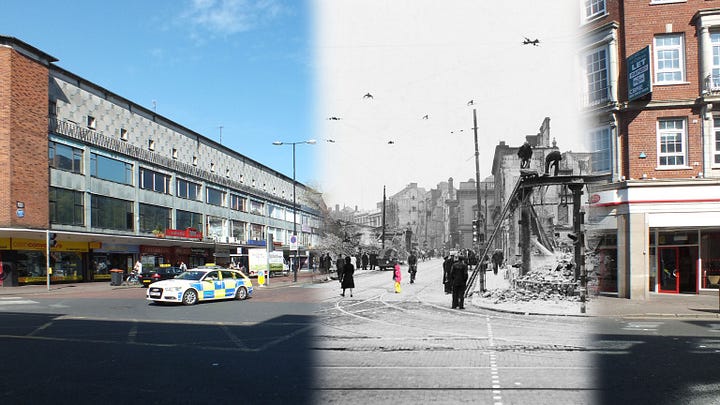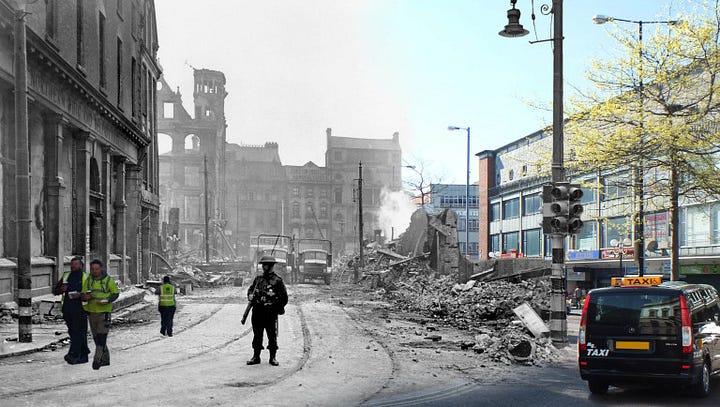In an apparent continuation of their Then & Now series, the Public Records Office of Northern Ireland (PRONI) has produced a new set of blended images that show the material destruction caused by the Belfast Blitz attacks (April-May 1941), alongside contemporary and more familiar landmarks.
The historic images are from the Records of the Cabinet Secretariat, Official War History of Northern Ireland (PRONI Ref: CAB/3/A/68).

Bridge Street (PRONI Ref: CAB/3/A/68/A) CC0
The Belfast Blitz was four attacks by German air squadrons over a four-week period. The first was a small attack on the night of 7–8 April 1941, followed by a major attack of 200 Luftwaffe bombers on military and manufacturing targets; an estimated 900 were killed and 1,500 injured. Another 150 were killed in the third raid on 4–5 May, and the final raid happened the following night.

Bridge Street (PRONI Ref: CAB/3/A/68/A) CC0
During the Easter Tuesday raids (15 April), vessels, public buildings and many streets were heavily bombed; 55,000 houses were damaged (more than half the houses in the city), leaving 100,000 temporarily homeless. Eleven churches, two hospitals, and two schools were destroyed.

Bridge Street (PRONI Ref: CAB/3/A/68/A) CC0
There was a lack of preparation. Prior to the raids, there were 200 public shelters and 4,000 household shelters. At PRONI’s permanent exhibition, there is a mock set up of a self-assembly Anderson Shelter, which were sheets of corrugated galvanised iron, partially covered in earth. The exhibition note explains that due to the damp nature of Belfast’s topsoil condition, many people forewent this construction.

Bridge Street (PRONI Ref: CAB/3/A/68/A) CC0
Instead, in heavily blitzed areas people ran panic-stricken in the streets and into the country.
There is the account of residents of the Protestant-populated Shankill area taking refuge in Clonard Monastery in the Catholic-populated Falls Road. The crypt and the cellar under the working sacristy had been transformed into a public shelter; it temporarily served as a sanctuary for those of both faiths and neither.
The Ulster Historical Foundation recently published an extensive and significant book written by Brian Barton — The Belfast Blitz: The City in the War Years. At 656 pages, it is a timely memorial to the devastation caused over 75 years ago.
